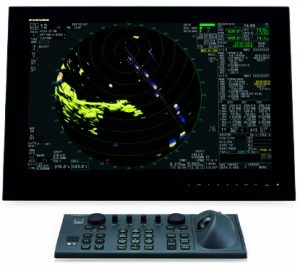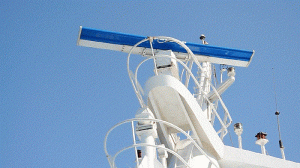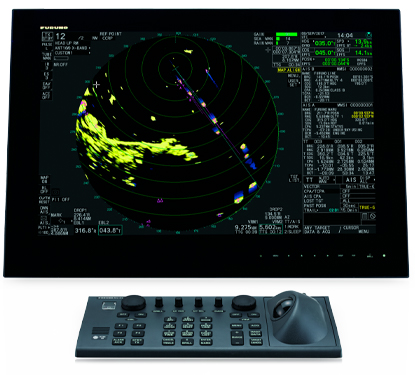
Radar is a critical instrument in the navigational bridge of commercial ships. It is a technology that uses radio waves to detect and locate objects in the ship’s vicinity. The term “radar” stands for “radio detection and ranging.”
The radar system consists of a transmitter that emits high-frequency radio waves and a receiver that detects the reflected signals. The radar antenna rotates to scan the surrounding area, sending out pulses of radio waves and measuring the time it takes for the waves to bounce back to the ship. The radar system then processes the reflected signals to produce a visual display of the ship’s surroundings. The radar display shows a map of the area around the ship, with the ship’s position in the center. Other vessels, shorelines, and navigational hazards such as rocks, shoals, and icebergs are displayed on the map, along with their distance, direction, and speed. The radar also provides information on the ship’s speed and heading, as well as the weather conditions.
Radar is an essential tool for safe navigation, especially in low visibility conditions such as fog, rain, or darkness. It helps the crew to avoid collisions, navigate through narrow channels, and maintain situational awareness. The crew must be trained to use the radar system correctly and interpret the information displayed on the radar screen. Regular maintenance and testing of the radar system are also necessary to ensure that it is functioning correctly and providing accurate information. Radars on navigational bridges of commercial ships work by emitting high-frequency radio waves from a radar transmitter and then receiving the signals that are reflected back from nearby objects. The radar then uses the received signals to create a visual representation of the surrounding area.
Here is a step-by-step breakdown of how radars work on navigational bridges of commercial ships:
- The radar antenna rotates: The antenna rotates continuously, typically at a rate of one rotation per minute. The rotation allows the radar to scan the surrounding area in all directions.
- The radar transmitter sends out signals: As the antenna rotates, the radar transmitter sends out a pulse of radio waves. The pulse lasts only a few microseconds, but it can travel several miles.
- The signals are reflected back: When the radio waves encounter an object, such as another vessel, a shoreline, or a navigational hazard like a rock or iceberg, they are reflected back toward the ship.
- The radar receiver detects the signals: The radar receiver on the ship detects the reflected signals and measures the time it takes for them to return to the ship.
- The radar processes the signals: The radar system processes the signals to determine the distance, direction, and speed of the object that reflected the radio waves.
- The radar displays the information: The information is displayed on a screen on the bridge of the ship. The screen shows a map of the area around the ship, with the ship’s position at the center. Other vessels, shorelines, and navigational hazards are displayed on the map, along with their distance, direction, and speed.
In addition to detecting and tracking objects in the ship’s vicinity, radars on navigational bridges of commercial ships can also provide information on the ship’s speed and heading, as well as weather conditions such as wind speed and direction. The crew must be trained to interpret the information displayed on the radar screen correctly and use it to make safe navigation decisions. Regular maintenance and testing of the radar system are also necessary to ensure that it is functioning correctly and providing accurate information.

- Daily visual checks: The radar system should be visually inspected daily to ensure that all components, including the antenna, display, controls, and connections, are in good condition and functioning correctly.
- Periodic cleaning: The radar antenna should be cleaned periodically to remove dirt, dust, and debris, which can affect the accuracy of the signals.
- Calibration: The radar system should be calibrated regularly to ensure that it is providing accurate information. Calibration involves adjusting the radar’s settings to compensate for variations in temperature, humidity, and other environmental factors.
- Testing: The radar system should be tested regularly to ensure that it is functioning correctly and providing accurate information. This can involve running simulated scenarios, such as detecting objects in a foggy or stormy environment.
- Software updates: The radar software should be updated regularly to ensure that it is compatible with other systems on the ship and is providing the latest features and functionalities.
- Repairs: Any issues with the radar system, such as malfunctioning components or damaged cables, should be promptly repaired to prevent safety risks and ensure the system’s accuracy.
- Training: The crew operating the radar system should receive regular training to ensure that they are proficient in its use and interpretation of the information displayed on the screen.
In addition to these activities, regulations and guidelines from international organizations such as the International Maritime Organization (IMO) and flag state authorities provide specific requirements for the maintenance and testing of radar systems on commercial ships. It is essential to follow these guidelines to ensure the safe and efficient operation of the ship’s radar system.
By MaritimEducation team

